How did Tom Watson become best golfer in the world? It all teed off 60 years ago in KC
Your Guide to KC: Star sports columnist Vahe Gregorian is changing uniforms this spring and summer, acting as a tour guide of sorts to some well-known and hidden gems of Kansas City. Send your ideas to vgregorian@kcstar.com.
From 1975 through 1983, Tom Watson was the best golfer in the world. To this day, only five men have won more than the eight major championships he seized in that span.
Much as he savored that time, though, what he cherishes most in his rich golf history wasn’t winning in Augusta twice. Or that 1982 U.S. Open thriller at Pebble Beach, his favorite golf course. Or those five Open Championships in the United Kingdom.
It wasn’t his first pro victory in the Western Open 50 years ago last week.
It was no such celebrated moment in some exalted setting or exotic land but the root of it all right here: his June 1964 victory in the Kansas City Golf Association Match Play tournament at the old Metro Golf Club, near 61st Street and The Paseo.
That’s where the 14-year-old best known through adolescence as Tommy Watson defeated Bob Devine, described by The Star’s Dick Mackey as twice as old and almost twice the size of the “Little Man.”
Sixty years later, Watson sees the day as a portal from vague ambition to a stunningly tangible vision.
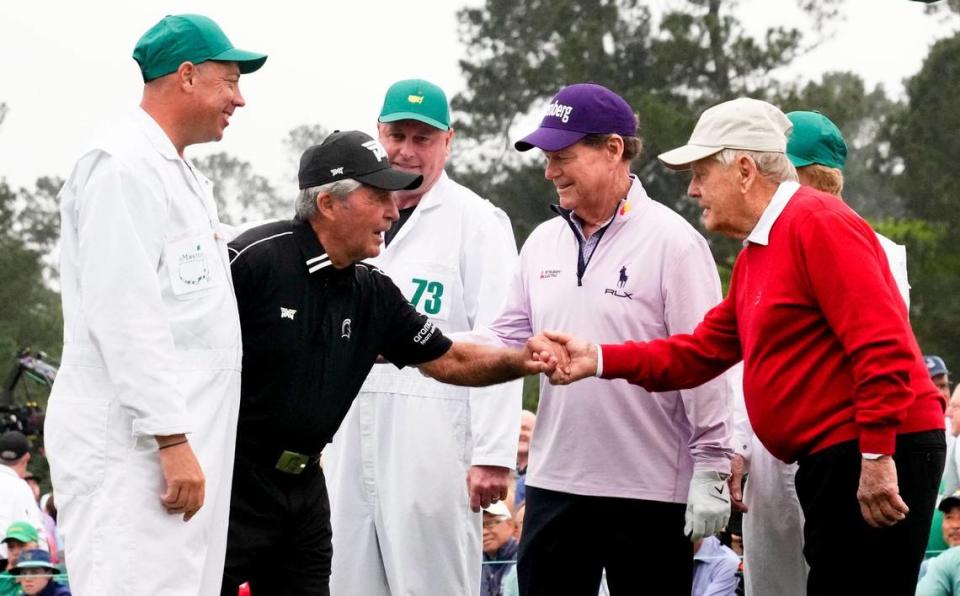
It’s a pivotal story he shared in detail during a marathon interview with The Star’s Blair Kerkhoff and me to reflect on his roots in the hometown where he still lives and enhances in many ways.
A few months after that 1964 triumph, Watson was in the family den with his mother, Sallie, when the phone rang.
“‘Hello … That’s nice. …,’” he remembered her saying. “‘When is it? … Oh, I’ll have to ask him.’”
Turning his way, she said, “‘Tommy, would you like to play with Arnold Palmer?’”
Would he ever. And so he did, pairing with the golf icon at Overland Park’s Brookridge Country Club in a fundraiser for cystic fibrosis.
But to Watson, the exhibition wasn’t merely about the chance to meet and play with Palmer; it was about competing with him as a peer.
For a good part of the day, that he did.
With Watson facing a 30-foot putt on the sixth green, Palmer encouraged him to “knock it in.” When Watson complied, Palmer quipped, “He listens very well, doesn’t he?”
They were tied at 2-under par after the front nine, Watson still correctly recalls, before Palmer pulled away by six strokes on the back nine.
Two years later, Watson was invited to play in an exhibition at the Topeka Country Club against another golf legend, Jack Nicklaus, who remains atop the major golf victories board with 18. After they tied with a 3-over-par 74, Watson’s high school, Pembroke-Country Day (now the Pembroke Hill school), felt persuaded to raise the headmaster’s flag for outstanding achievement.
As explained on a school bulletin board, The Star wrote then, it flew “because Tom Watson allowed Jack Nicklaus to tie him.”
Each of those events gave Watson vital confidence and credibility. As he recalls with playful imitations of their voices, those episodes also were the beginning of beautiful friendships. Both idols greeted him by name years later when Watson joined the tour.
That horizon was foreshadowed by a 1965 photo with Palmer that Watson considers one of his favorites:
The precocious boy in shorts and The King of golf gazing into the distance alongside each other.
“All because of winning the Kansas City men’s match play when I was 14 …,” Watson said “And that’s why it’s the most important tournament. Because that gave me the dream.”

‘Those are the things that give you life’
Hearkening to that also is testimony to something else distinct about Watson, who will turn 75 in September.
He revels in being made in Kansas City.
And he’s just as immersed here now as he was as a child or under the tutelage of golf pro Stan Thirsk at the Kansas City Country Club or at Pembroke with a number of teachers he still raves about.
Save for his four years at Stanford, Watson never left for a warmer climate that may have been more conducive to year-round golf. For that matter, he came to think it a competitive advantage to know how to golf in cold weather. He never sought to live in a more posh locale.
He still basks in the “real sense of belonging” and “grounding” sense of shared community, which helps explain why he carries an ambassadorial ardor about our “hidden gem” as he’s spanned the globe.
He often finds himself making a point of saying, “You know, I’m from Kansas City.”
And always will be as one of its most revered athletes, one who in the last few years has been competing in cutting horse competitions. That’s in many ways an ongoing tribute to his second wife, Hilary, who was 63 when she died from pancreatic cancer in 2019 and was accomplished in the sport.
“Why would I want to move away from my friends and family?” said Watson, who lives on a farm in Bucyrus, south of Overland Park. “Those are the things that give you life.”
In a place he’s given more life, profile and character.
All these decades later, the Kansas City original remains deeply engaged in the community through such endeavors as his Watson Links program and the First Tee of Greater Kansas City.
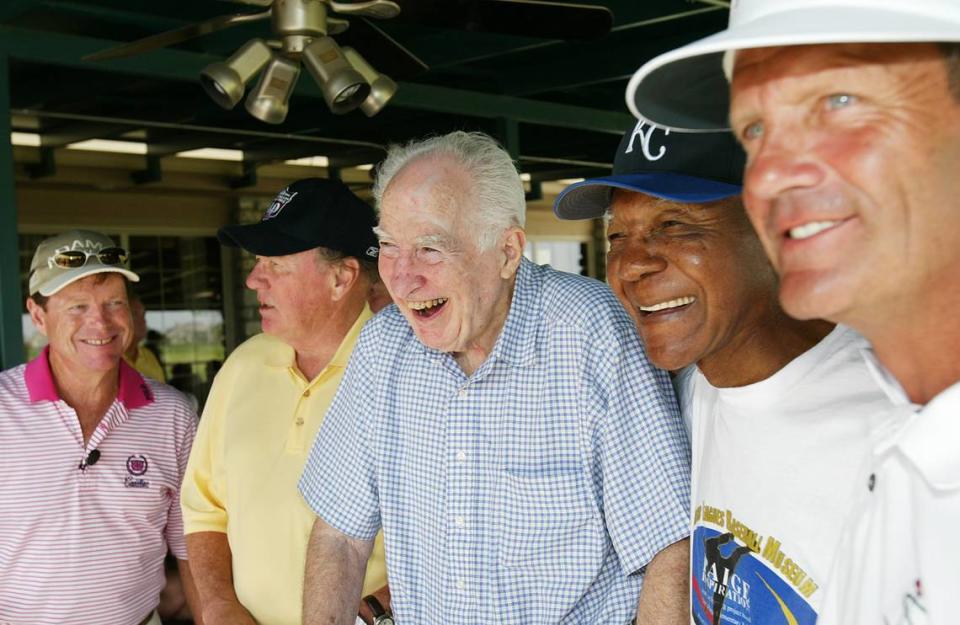
He has made profound charitable impact for, among other causes, Children’s Mercy Hospital and the ALS Association. The latter has been a virtual crusade for him since the death from amyotrophic lateral sclerosis (ALS) of his caddie, Bruce Edwards, and it’s entwined him with Kansas City pillars George Brett, the Royals’ great, and late former Star editor Joe McGuff.
Watson also has made Kansas City better through his principled resignation from the Kansas City Country Club in 1990 when the club would not admit Jewish H&R Block Chairman Henry Bloch — a topic we’ll come back to.
All of which speaks to the fact that Watson remains not just from here but of here.
Moreover, he’s a dedicated local sports fan — albeit less interested now in college sports because of his exasperation with the name, image, likeness (NIL)/transfer portal era.
Like many Kansas Citians, he’s steeped in the Chiefs for as long as he can remember. He still thinks of Otis Taylor’s touchdown in Super Bowl IV (“whoa”) and to this day shares the communion of the Christmas Day 1971 playoff loss to Miami he attended over his mother’s objections.
Then there’s the Royals, whom Watson loves unconditionally as a self-described “true-blue fan” (when he’s not at games, he’s nearly always watching on TV) in the sport that was his first and in some ways most abiding love.
“I jokingly say that baseball is the reason I … became a golfer,” he said.
Because when he was 8 years old playing youth baseball with the Hen House Chicks (the “Midget C” team, Watson said, laughing), he was cut from the team.
“I was fast. I could catch the ball and I could throw the ball,” he said. “But I couldn’t hit. Couldn’t hit it.”
With a smile, he added, “So what am I going to do in the summer? Golf.”

‘Here’s how you grip the club’
Chances are that his golf game would have emerged somehow or another. Because like so much else of what Watson would become, it was instilled by family.
In 1955, Watson was 6 years old standing on the fifth tee at the Kansas City Country Club, he remembers, when his father, Ray, put a hickory-shafted five iron in his hands and said, “OK, here’s how you grip the club.”
Then he told his son to turn his back to the target on the back swing, just as his father was demonstrating, and on the follow through “turn your belly button to the hole.”
Then his father, a scratch handicap golfer himself, told his son to spread his feet apart. He put his hand on Tommy’s head.
“All right, the last thing: I want you to keep your head still,” his father told him.
As Palmer would say about a decade later, Watson listened well.
“He never had to put his hand on my head ever again,” Watson said. “Because I got the idea of keeping my head still and turning my back to the target and my belly button to the hole.”

Whatever instincts he had for the game were honed by his father but also his desire to compete with his older brother, Ridge.
That was an early indicator of the competitive fire that would animate his career and soon take further shape with a zeal for going up against other older competition.
But Watson also was struck early on by another aspect of the game, something that would inform his identity both as a golfer and a person. His dad preached the virtues of the etiquette of golf, and it was the first thing taught in the junior program at the Kansas City Country Club when he was 8 or 9 years old.
On the first day, Watson remembers all the kids being told to put their golf bags off to the side and gather on the patio under “the big ol’ elm tree” to hear about how you play the game:
Respect the game and opponents. Don’t yell. Replace your divots. Rake the bunkers. Be trustworthy to keep your own score and penalties.
In many ways, that sense of values and structure mirrored what Watson, the middle of three boys, was being taught at home.
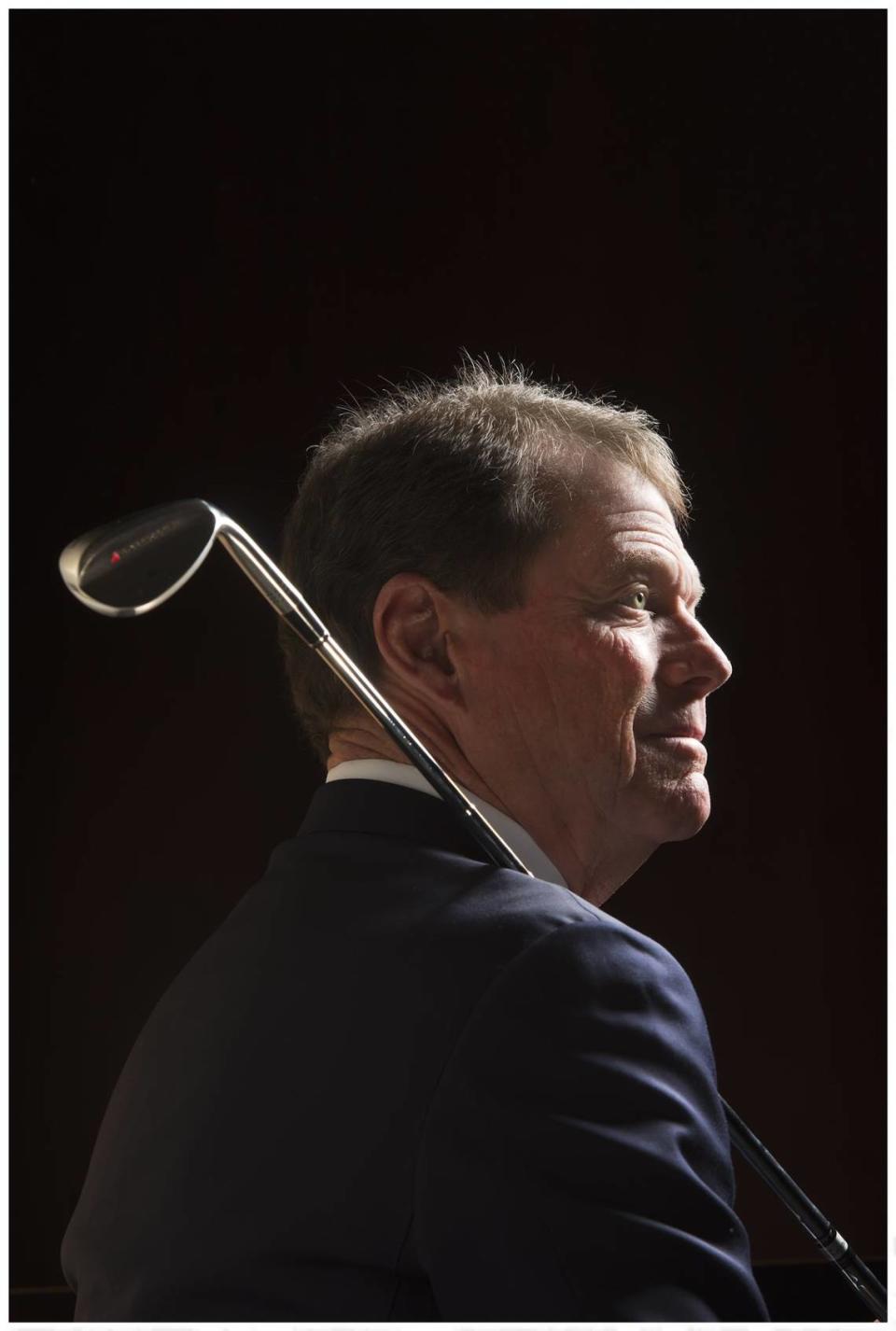
‘Look at all the gold!’
His father, who during World War II was a navigator on a B-24 bomber flying out of New Guinea, worked 50 years in the insurance business. His mother, per her obituary, “was a wonderful mother and a good friend” who was “genuinely interested in people” and unforgettable for her “dignity and grace.”
“Dad was kind of a no-nonsense guy,” Watson said. “He expected you to do your work. Expected a perfect shot when you hit a golf shot. And if you didn’t hit a perfect golf shot, he said that wasn’t a perfect golf shot.”
Smiling as he spoke of his mother, Watson said she had “a great sense of humor.” By way of explanation, he thought of the train bell she had brought to the house and posted in the backyard of their home off 55th Street and Ward Parkway.
When she wanted the boys to come home, she’d clang the bell.
“And you could hear a train bell forever, right?” Watson said, adding, “We could hear that train bell inside (friends’) houses.”
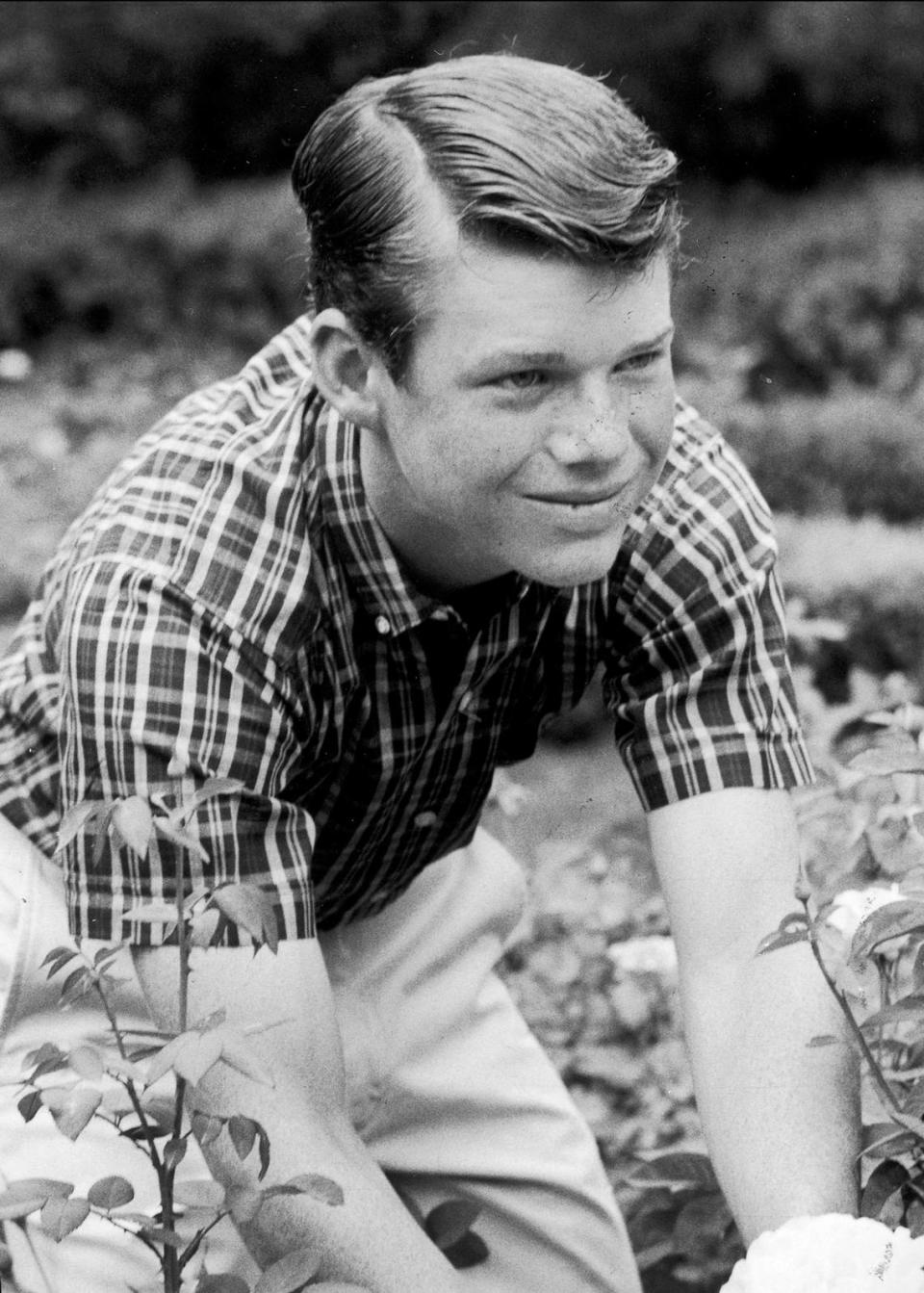
As he spoke of her, he thought of other idyllic moments from childhood. Like the time on television that the Lone Ranger retrieved gold from the bad guys, leading Watson to take his little red wagon down to a creek near the home of a friend.
“And I found a bunch of gold,” he said.
More precisely, he found a bunch of limestone rocks that “had kind of a goldish color” to them. He loaded up the wagon and struggled to get it up the hill and back home.
With his mom on the front stoop wondering what he was up to, Tommy declared, “‘Mom, we’re rich! Look at all the gold! Look at all the gold!’”
Golden childhood that it was, Watson also remembers having a belt taken to his butt “I think three times” and often being sent out to the weeping willow in their backyard to break off a switch to have swatted on his legs. Perhaps one of those times was when he was suspended from school for smoking as he was “trying to show off.”
But Watson considered his parents loving and fair, and he figures “a little corporal punishment never hurt anybody” no matter how it’s viewed today. Perhaps the most complicated time in his relationship with his parents was in 1990, when the very sorts of principles he’d been taught at home and at the Kansas City Country Club led to Watson’s resignation there.
Because he was then married to a Jewish woman, Linda Rubin, with whom he had two children, Watson felt it was only right to protest the discriminatory denial of Bloch’s membership.
“Henry Bloch (was) an icon of the community, one of the kindest, (most) generous men in the community, and he was blackballed by a secret committee because he’s Jewish,” Watson said. “And that didn’t sit well at all with me.”
Bloch was offered, and accepted, admission a week after Watson resigned.
But Watson’s decision, he said, “created some problems for my father and mother.” And at the time, Thirsk, an essential mentor from the time Watson was 11, told The Star he couldn’t comment on it because “it pains me too much. Tom is like a son to me.”
Over time, though, such tensions were reconciled. And Watson rejoined the club in 1995.
“I guess, fortunately, I was kind of the lightning rod of the change at Kansas City Country Club,” he said.

‘What are you doing playing football?’
Even after the pivot point of the 1964 KCGA Match Play title opened up Watson’s imagination about golf, and earned him a treasured “well done, son” and hug from his father, he still played other sports.
He was a fine basketball player at Pembroke, and as a quarterback he led the Raiders in 1966 to their first Catholic-Prep conference title since 1940.
“Couldn’t throw the ball very far, but I could run it,” he said. “I was fast. And shifty.”
Still, he was a good enough passer to hit Dave Kemper (part of the Kemper family) for a decisive 36-yard touchdown pass in the championship-clinching victory over St. Mary’s on a play Watson remembers for Kemper being wide open after a fake handoff.
“So I’m back there (thinking), ‘Don’t screw this up,’” he said. “Lobbed it out there. He had to wait for it.”
If Watson was entertaining any slight notion of continuing with football in college, though, that was perhaps dispelled during a visit to Pembroke by Chiefs’ Pro Football Hall of Famer Len Dawson.
One morning after the quarterback was the guest speaker for the 8:10 a.m. assembly, he paused to speak with Watson — already a golfer of enough renown that Dawson knew who he was.
“What are you doing playing football?” Dawson asked him
What he was really saying, Watson said, smiling, was, “How stupid are you to be playing football?”
By the next fall at Stanford, Watson would begin to enter the final phase of making golf a single-minded priority — and punctuating it with a commitment to affirm it.

‘What life’s all about’
With Watson’s father and brother having attended Stanford before him (and younger brother John later following), Watson will tell you he got accepted despite not having “the best of grades.”
“Having a family connection with a school gave you precedence,” he said. “Unfairly. But it did give you precedence.”
Golf was part of the package, of course. But that didn’t really ease Watson’s sense of himself as a “snot-nosed kid out of Kansas City” effectively entering the ocean without a life-preserver.
Struck by the social upheaval of the late 1960s and early 1970s, unready for the academic rigor and still finding himself, Watson often was uncomfortable in and out of the classroom even as his golf continued to flourish and develop.
Perhaps encapsulating that disoriented feeling, he remembers “the beginning of reality” when he was playing touch football one day. He put a ring in one of the shoes he’d taken off only to go back to the shoe and discover the ring had been stolen.
“The college experience was full of turmoil and lots of self-examination and ‘who am I?’ type of stuff,” he said. “Didn’t particularly like it, to be honest with you.”
Now, though, he figures that sort of feeling is “what life’s all about.” And even as he grappled with his studies, he evolved as a person. He went to college supporting the Vietnam War and left against it, and he gravitated to a major that proved fascinating to him even if he saw it then as merely an easy way to graduate: psychology.
He vividly recalls a class with Phil Zimbardo, best known for the controversial Stanford Prison Experiment that Watson remembers illuminating “how normal, educated people” could turn into part of a mob. He also liked an abnormal psychology course.
Except …
“The problem was I identified with each one of these behaviors,” he said, laughing. “That’s me. As in, man, I’m messed up.”
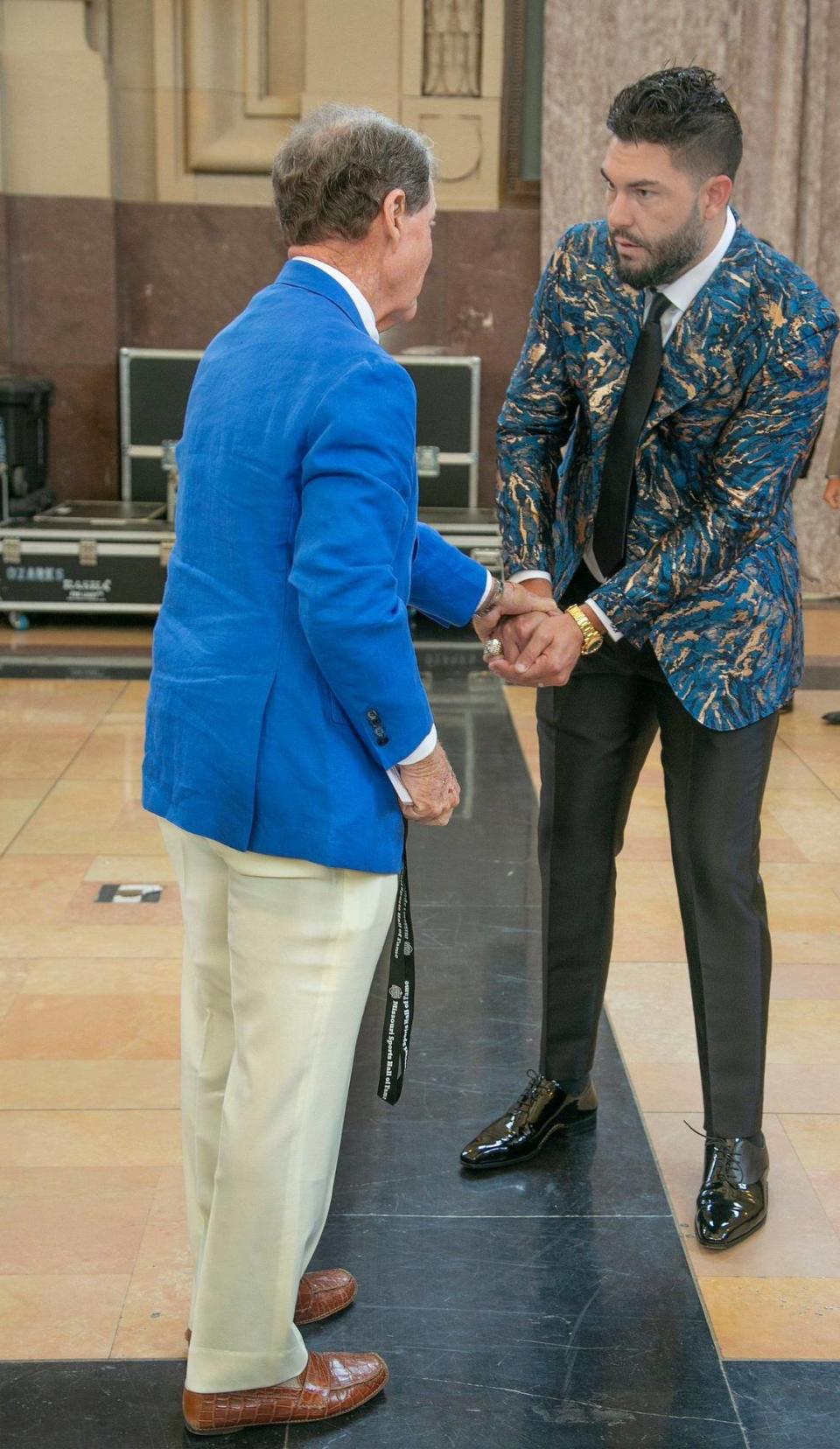
Intrigued as he was by what he was learning, though, as Watson approached graduation in 1971 and fretted over his future, he knew he wasn’t going to become a clinical psychologist or do anything more specific with his degree.
By the time he came back to Kansas City for Thanksgiving his senior year, he had convinced himself, “The only real talent you have is golf. And you like it. You love it. Do that.”
After a day of quail hunting with his father near Wamego, Kansas, they started home in the darkness when Watson said, “Dad, I’ve decided I’m going to turn pro.”
His dad didn’t hesitate to respond.
“Son, that’s the right decision,” Watson remembered him saying. “Because if you didn’t make that decision, you would have always wondered whether you could have made it.”
In some ways, that dynamic informed how Watson has lived ever since. He tends to advise friends and family to reach out for their dreams — like the stuff that began to materialize for him 60 years ago this month.
The Star’s Blair Kerkhoff contributed to this story.
Star sports columnist Vahe Gregorian is changing uniforms this spring and summer, acting as a tour guide of sorts to some well-known and hidden gems of Kansas City. Send your ideas to vgregorian@kcstar.com.
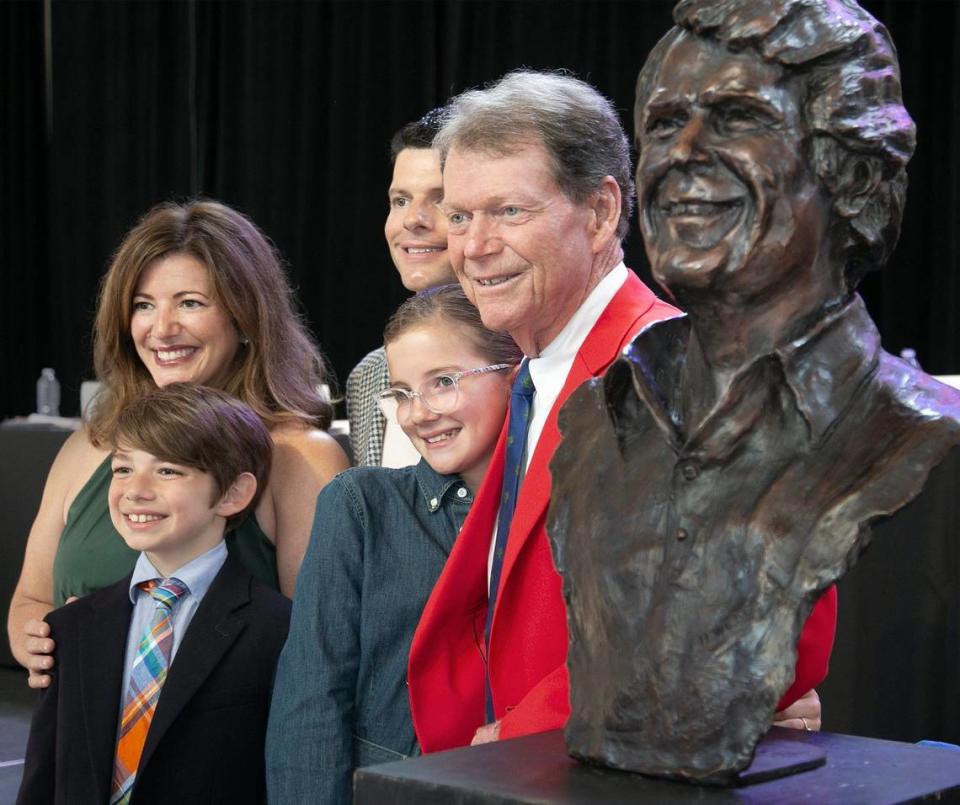

 Yahoo Sports
Yahoo Sports 
